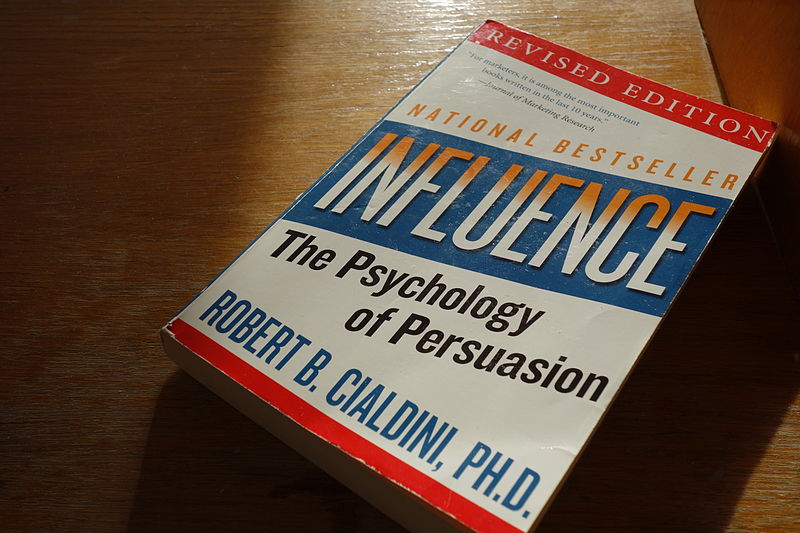
Source: Robert B Cialdini - Influence - The Psychology of Persuasion, Jakub Safranek, Wikimedia
In this lesson, you have learned that a speech, no matter what the subject, requires a speaker, an audience, and a purpose. In general, the purpose of a persuasive speech is to convince the audience to agree with the speaker. You have seen that in order to achieve persuasive purpose, speakers structure their remarks carefully and make deliberate choices about each word they include. They draw upon Aristotle’s three pillars of rhetoric, appealing to ethos, pathos, and logos. They rely on rhetorical structures and devices to make their remarks memorable and persuasive.

Source: USS Arizona burning-Pearl Harbor, Wikimedia
In his Pearl Harbor Address, Franklin Roosevelt used all three appeals as well as repetition and parallel structure. Read Franklin Roosevelt’s Pearl Harbor Address by clicking on this PDF. Pay attention to Roosevelt’s use of the three appeals, parallel structure, and repetition. Keep the PDF open so that you can refer to it for the exercise that follows. If you would like to view and listen to the president deliver the speech, click here for the video.
For each question below, choose the appeal, rhetorical structure, or device that contributes to the persuasiveness of Roosevelt’s argument.


Source: Speech1, Njallis, Wikimedia
Speeches can be powerful and persuasive when speakers compose them using the rhetorical structures and devices you have studied in this lesson. By learning about these persuasive tools, you will understand what speakers are trying to accomplish when you listen to or read their speeches.